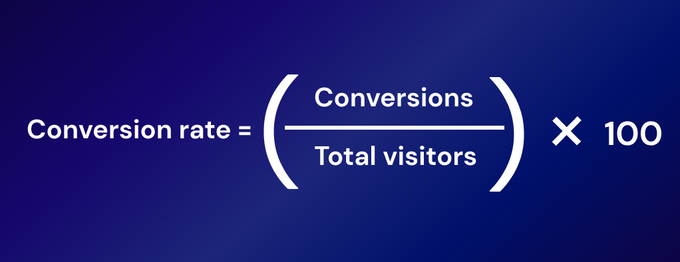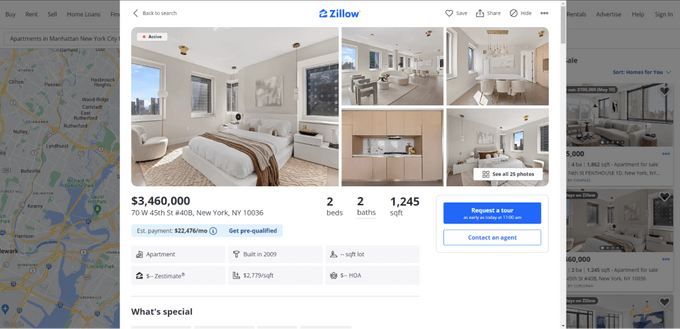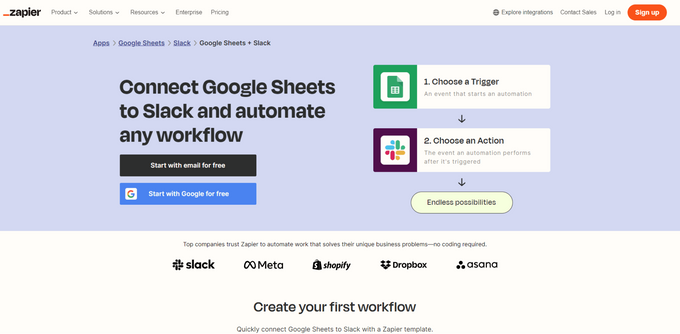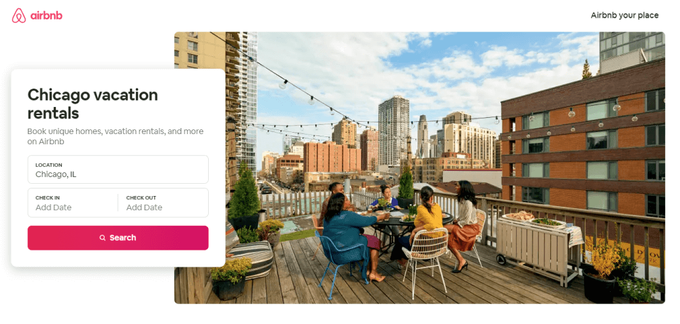SEO conversion: Advanced tactics to track and maximize sales
Learn how to calculate your SEO conversion rate, which metrics to track, and the best ways to maximize conversions.
Updated May 12, 2025
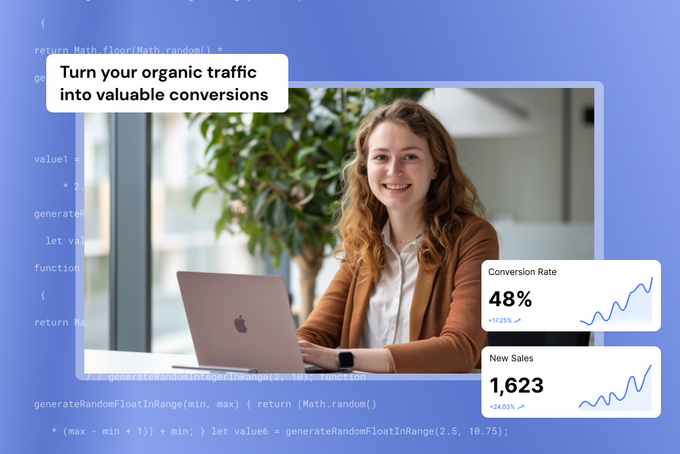
Conversions are the lifeblood of any SEO strategy because they have a direct impact on your bottom line. However, many businesses still haven't mastered the art of converting their visitors into customers. By optimizing for conversions, you can significantly increase your return on investment and turn your organic traffic into real revenue.
In this article, I'll share some practical strategies to help you measure your conversion rate accurately, understand different types of conversion funnels, and optimize your pages for better performance. Let's start by looking at SEO conversion and how to calculate it.
Key takeaways
- To account for SEO conversion rates, you need to break your traffic down into SEO funnels.
- You need to look at every funnel as a separate campaign and measure and optimize it individually.
- If you properly analyze what types of searches drive conversions, you'll find many conversion opportunities.
- While branded and product searches have the highest conversion rate, informational searches have the most volume and growth potential.
What is an SEO conversion?
SEO conversion occurs when a user reaches your website through organic search and ends up completing a conversion goal. These goals include booking a demo, purchasing a product, signing up for a webinar, or starting a free trial.
Unlike conversions from paid search, which usually come from specific campaigns, SEO traffic typically comes from multiple pages with different types of user intent, which makes tracking and optimizing for SEO conversions more complex.
How to calculate your SEO conversion rate
To calculate your overall SEO conversion rate, divide the number of conversions by the amount of visitors. Then, multiply that number by 100.
For example, if a page receives 1,000 organic visitors and generates 50 conversions, the conversion rate is (50 / 1,000) x 100 = 5%.
But looking at your overall SEO conversion rate alone isn't useful. If you want to track and optimize at a higher level, you need to divide your SEO conversions into three parameters:
- Type of topic/intent: What is the user's goal? What topic are they interested in?
- Type of page: Did they click on a product page, feature page, homepage, or content page?
- Type of conversion: Did they sign up to your email list? Did they place an order? Did they book a demo or start a free trial?
Because your website targets more than one topic, user, and conversion goal, you need to measure each funnel separately. These three parameters, or any combination of them, can be a different funnel.
» Find out how conversion rate optimization can help increase conversions.
Example of different SEO conversion funnels
Let's look at a few funnels on a site like Lululemon as an example:
- A user reads an article about yoga and buys a yoga mat.
- A user reads an article about hiking and buys a backpack.
- A user reaches a product page for women's leggings and makes a purchase.
- A user searches for Lululemon, reaches the website, and buys a pair of shorts.
These are four different topics, pages, and products. So, you could say Lululemon's SEO gets a certain overall conversion rate, but it's actually made up of multiple funnels, each dramatically different from the others. The right way to calculate their SEO conversion rate would be to break it down into these separate funnels and measure each individually.
» Schedule a free call for a comprehensive breakdown of your funnels.
How to calculate the value of your website traffic
To find the overall value of your website traffic, you need to calculate your revenue per visitor (RPV), or how much each visitor contributes to your revenue. Simply divide the total revenue by the total number of visitors to your site.
For instance, if your website generates $10,000 in revenue from 2,000 visitors, your RPV is (10,000 / 2,000) = $5 per visitor.
You should also separate your traffic into different types (i.e., product, branded, and informational searches) because each has a different value. For example, I've seen cases where a single page can attract five times more traffic than the entire website, but it's purely informational and generates no conversions. This can skew your results significantly.
» Chat with us to discover how to make the most of your website traffic.
Challenges of measuring SEO conversion
Measuring and optimizing each SEO funnel separately means optimizing for every topic on your website, which can rank for many keywords. For example, a large website like Investopedia ranks for about 6.5 million keywords and has over 40,000 pages, and an even smaller website like Deel ranks for over 77,000 keywords and has about 2,700 pages.
How do you optimize that many pages?
Regular analytics tools are built for paid channels where you send a lot of traffic to a small number of pages, not where you send a little bit of traffic to many different pages. To solve this issue, you need a comprehensive tool like Entail CRO.
Leveraging the opportunities of SEO conversion
Product searches
Although it's not always easy to rank for them, product searches present significant opportunities for SEO conversion. By analyzing the queries people use when searching for products like yours, you can categorize these searches into classes and find numerous conversion opportunities that directly relate to your brand and its offerings.
Let's take online therapy as an example. You can break the search queries down by type of mental disorder, persona (men, women, teens, married couples), and location—like "online marriage counseling for seniors in LA," for instance. This helps you identify the product pages you need and the queries they should target. That way, you can build pages targeting high-intent, bottom-of-the-funnel searches that can increase conversions dramatically.
Branded search
Another key opportunity for SEO conversions is increasing branded searches. Branded searches are when users search specifically for your brand. They typically have the highest conversion rates because these users are already familiar with your brand or product and, therefore, more likely to make a purchase.
Informational content
While some brands doubt the potential of informational content, it can drive significant conversions if you've built a solid SEO marketing funnel. As I mentioned before, branded searches have the highest conversion rates, followed by product and informational searches. However, in terms of volume, it's reversed: informational searches bring the most traffic.
That said, it's important to keep in mind that the value of each type of search varies across industries. For example, jewelry and fashion brands convert mostly through branded or product searches since there isn't much informational volume. Similarly, emergency services, locksmiths, and moving companies rely more on direct searches like "locksmith near me." On the other hand, industries like online therapy have a lot more informational opportunities.
» Determine every keyword's conversion potential with Entail's content strategy software.
Key SEO conversion metrics to track
In SEO, measuring and attributing where your traffic comes from and how users navigate your website is important. The main SEO conversion metrics you need to track include:
- Volume: Refers to the number of potential visitors who might see your site. It gives you an idea of how many people could eventually become customers if they click through.
- Impressions: How often your site appears in searches before anyone actually clicks. This tells you how much traffic you can potentially drive to your website.
- Traffic: The number of people who visit your site. Getting a significant amount of traffic is the first big step towards conversion.
- Clicks: The clicks your site gets from Google. It shows whether your content is good enough to prompt action right from the search results.
- Click-through rate (CTR): The number of people who clicked on your content compared to the number who saw it. A high CTR indicates that the elements in your content are relevant and support the user journey.
- Revenue per user (RPV): How much money you earn from a single customer. This can give you a better idea of the value of each visitor on your site and how much you're making overall.
- Conversion rate: Percentage of visitors who complete a marketing goal on your site, like filling out a form or buying a product.
If you want to measure your entire SEO funnel, start with volume, then impressions, traffic, and finally, conversions. Do this for each topic and page separately, keeping in mind that over 95% of SEO traffic is typically at the upper parts of the funnel and doesn't convert.
How to optimize for SEO conversions
Let's explore a few key tactics for maximizing your SEO conversion rates across different types of pages and user intents.
» Discover the top CRO best practices to boost conversions.
Build an effective SEO funnel
To optimize your SEO conversion rates, you need to make sure that your bottom-of-the-funnel pages convert, your mid-funnel pages send traffic to the bottom-of-the-funnel pages, and your upper-funnel pages send traffic to your mid-funnel pages.
» Discover essential marketing strategies for the bottom of the funnel.
Analyze and optimize pages separately
Users behave differently on product pages versus content pages, so you should treat them differently. Content pages typically attract informational traffic with informational intent, while product pages draw more transactional intent. This difference in user intent means you need to analyze and optimize them separately.
Optimize for search, not conversions
You should optimize your pages first and foremost for search because you need to drive traffic before you can generate conversions. If you just optimize for conversions, you won't have any traffic to convert into sales.
» Discover why you should combine CRO and SEO.
Treat every page like a separate campaign
At Entail, we look at every page as a separate campaign, breaking it down by page, topic, and marketing goal. Each breakdown is an SEO funnel. While these funnels are interlinked, isolating them as much as possible allows you to measure and optimize each separately.
For example, you might say, "For product A, I can increase conversions by 10%. For product B, I can increase conversion by 50%. For product C, there's a lot of volume, so I can increase traffic by 500%." Every marketing goal has a different value, so the significance of increasing conversions and volume varies based on the marketing goal you're optimizing for.
» Launch as many campaigns as you need with Entail CRO.
Add relevant links and CTAs to your content
If you have enough links, calls to action, and widgets that are relevant to the intent and the context of every section of an article while guiding traffic down the funnel, you can reach a click-through rate of over 40%. Without these elements, your blog becomes a black hole. While any traffic coming from the blog may give your website authority, it doesn't effectively contribute to conversions.
Examples of websites that convert well from SEO
There are several good examples of high-scale SEO conversion funnels from successful companies in different industries. Let's take a quick look at three of them.
Zillow
Zillow, an online real estate marketplace, uses programmatic SEO to build funnels for every city, neighborhood, and type of home. They automatically generate pages for each funnel, targeting searches like "houses in New York." This approach allows them to cover a wide range of searches and creates plenty of potential conversion opportunities.
Zapier
Similarly, Zapier leverages programmatic SEO to generate multiple pages about how to integrate different software, like Google Sheets and Gmail or Monday and Slack. By targeting specific user searches about automating different tools, Zapier shows how you can create targeted pages at scale to capture a wide range of user intents.
Airbnb
Airbnb, a global online marketplace for vacation rentals, targets searches such as "Virginia Beach vacation rentals" and "Airbnb Chicago" to attract users. Using programmatic SEO, Airbnb creates pages for specific locations, property types, and activities. Like Zapier and Zillow, this enables them to target a large amount of searches and generate conversions at scale.
» Book a consultation to learn how to build a successful conversion funnel.
Optimize your SEO conversion rate to boost sales
Optimizing for SEO conversions is an ongoing process that requires constant refinement and experimentation. Remember, the ultimate goal isn't just to drive more traffic but to create meaningful interactions that benefit your visitors and help them complete their user journey. By focusing on user intent, providing value, and guiding visitors through well-crafted funnels, you can turn your organic search traffic into a powerful engine for growth.
» Explore SEO customer acquisition strategies to boost traffic and conversions.
